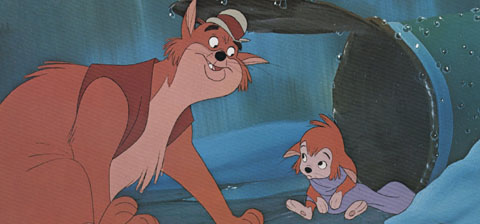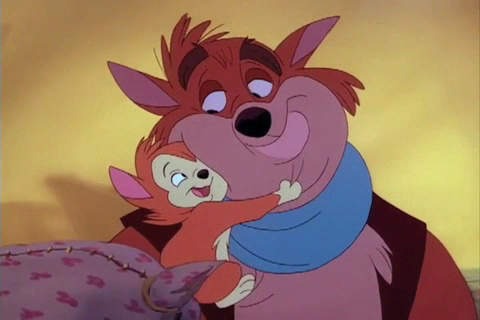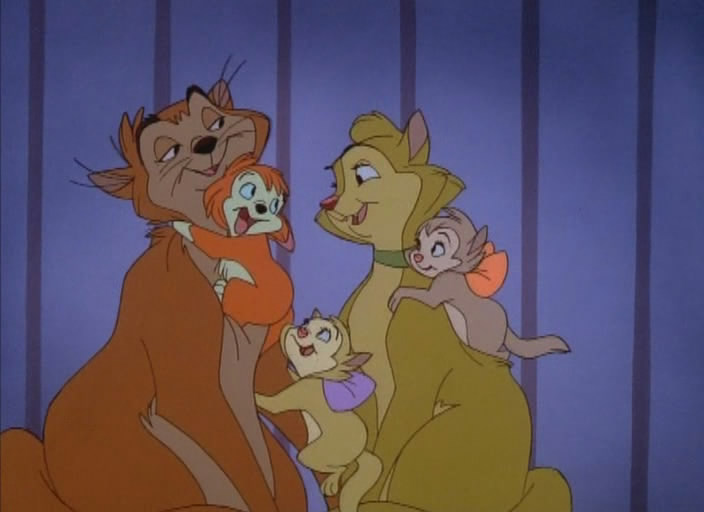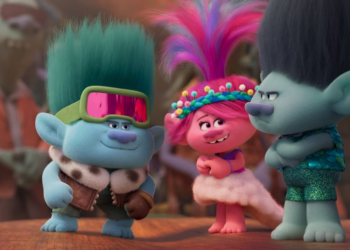
Welcome to ‘Forgotten Gems of Animation’! Here, we’ll discuss animated shorts, full-length films, and other animated relics that have fallen through the cracks. If you have any suggestions for future installments (including TEACHER’S PET, and I’m sorry already, Baymax), let us know in the comments below!
Let’s get in Mr. Peabody’s Wayback Machine and head to 1972. Don Bluth and Gary Goldman had arrived at Disney Animation the year before and had started their training in the ways of animation. Don and Gary were apt pupils, but they, along with other young animators, were concerned that they weren’t learning quickly enough. Almost every day, Bluth, Goldman, and the other new hires were told they would have to take over the animation department when the famed Nine Old Men retired. The responsibility weighed heavily on the shoulders of the young animators.
During a bike ride on the studio grounds, Bluth and Goldman discussed the responsibility and the level of skill they would have to possess. Both agreed it would be impossible to attain in a few years the skills it took the Nine Old Men decades to accrue. In order to accelerate the learning process, Don and Gary decided to continue practicing during their hours off. Don offered the use of his garage and his Moviola machine. Gary agreed to the plan. By the end of 1973, John Pomeroy had joined Don and Gary. By then, more equipment had been acquired: a camera, an editing table, and another Moviola.
As more animators joined Don, Gary, and John, the group began to get a crazy idea: maybe they could make a film. Not a feature-length film, but a short. The team initially decided to make a film about The Pied Piper of Hamburg; however, the film ballooned to a feature-length project, which would have required too much of the animators’ time.
It was then when Bluth thought of an experience from his childhood. Bluth had grown up on a farm in Payson, Utah, and there was a cat who had lived in the farm’s woodpile. One day, the Bluth family found that the cat had disappeared. The family figured the cat moved on and forgot about it. A few weeks later, however, the cat returned and never left again. The team found this experience charming and began concocting a story of what might have happened to the cat during its time away. This story eventually became Banjo the Woodpile Cat!

Banjo the Woodpile Cat tells the story of Banjo (I know; no kidding), a kitten who lives with his family in a woodpile on a Payson, Utah, farm. Banjo’s a cute cat, but he has a tendency to get into mischief like chasing chickens and breaking Christmas ornaments. Things come to a head, however, when Banjo leads his sisters to the roof of the chicken coop. Banjo tells his sisters, Emily and Jean, about a rumor he’s heard: cats always land on their feet! Banjo wants to test this theory, but his sisters are reluctant. During a scuffle, the three kittens fall off the roof. They land on their feet (because cats always do), but Banjo’s father is still upset with Banjo for putting his sisters in danger. Banjo is sent to find a switch for a good spanking, but Banjo has other ideas. Feeling unloved, Banjo runs away, hitching a ride to Salt Lake City on a feed truck.
Initially, Banjo is thrilled by the new adventures he’s having. However, as night encroaches, the city becomes scarier and Banjo grows lonelier. Overwhelmed by homesickness, Banjo dissolves into sobs just as Crazy Legs, a streetwise, jazz-loving cat, happens by. Crazy Legs is charmed by Banjo and agrees to help him get home. Banjo knows that his only chance to return home is to hitch a ride on the same feed truck that brought him to Salt Lake City. With the help of Crazy Legs’s showgirl friend Zazu, Crazy Legs and Banjo set out to find the truck.

The story is simple, but it’s very moving. Banjo is such a cute little kitten that he wins hearts right away, even if he is rambunctious and disobedient. (Like the title song says, “Banjo was not really bad, they say; it’s just… he couldn’t be good!”) In a way, he’s a lot like us when we were Banjo’s age. The film does an excellent job of helping us see the world through Banjo’s point of view; this is most prevalent during the “Banjo explores the city” montage, which moves from a feeling of wonder to one of profound loneliness. Banjo is an extremely appealing character, and this gives the story a strong dose of warmth!
As much as I love Banjo, though, I have to say that I love Crazy Legs even more! Scatman Crothers does an excellent job voicing the character; yes, it’s celebrity voice casting, but this is a prime example of doing it well. Crothers’ gravelly voice and laid-back personality are a perfect fit for Crazy Legs. The relationship between he and Banjo is, in my opinion, one of the strongest qualities of the short. Since this is a short, the relationship is drawn fairly quickly. Since the characters are so strong, however, the love and friendship between Banjo and Crazy Legs becomes palpable and poignant immediately!
On a technical level, Banjo the Woodpile Cat is what Don Bluth calls an “exercise,” a film where the young animators could apply the new techniques they were learning. This goal really shines through in the film, which features lots of neat effects animation: shadows, reflections in water, and that famous Don Bluth dazzle! The character animation is very expressive and smooth-looking. The film isn’t perfect on a technical level, but it’s obvious that there was a lot of talent among those young animators!

During the making of Banjo, Don Bluth showed the short to then Disney CEO Ron Miller. Bluth offered to sell the distribution rights to Disney, but Miller refused, saying that Disney was not encouraging its animators to participate in outside projects. For Bluth, this was the straw that broke the camel’s back. For years, Bluth had been growing frustrated with the quality of the animated films Disney was producing. Now, this short, his strongest expression of creative freedom, had been rejected. Bluth took this as a sign that it was time to move on. On September 13, 1979, Bluth, Goldman, and Pomeroy resigned from Walt Disney Animation. The next day, a large chunk (but not all) of Bluth’s crew also left Disney.
After the resignation, Don Bluth Productions (as the group was now called) had much more time to devote to Banjo, and production accelerated. The short was completed in December 1979, but it wouldn’t be seen until 1982, when it was broadcast as a Christmas special in the wake of Bluth’s newly acquired (due to The Secret of NIMH) fame. By this point, Steven Spielberg has seen The Secret of NIMH and was very impressed with what he saw. Spielberg picked up the phone and invited Bluth and company to come work with Amblin Entertainment. Bluth accepted, and the rest is history!
Unfortunately, audiences didn’t get a chance to see Banjo the Woodpile Cat until Don Bluth Productions was really on its way. By the time the short was aired on TV, there were flashier Bluth projects around to capture the public’s eye. Therefore, poor little Banjo was lost in the shuffle. That’s one man’s opinion, anyway!
Whatever the reason for the obscurity, Banjo the Woodpile Cat is definitely worth seeking out! It’s somewhat hard to find (the wonderful-sounding 30th anniversary DVD is out of print, and the bare-bones DVD is also elusive), but it is available! If you’re a Don Bluth fan or just an animation addict, Banjo the Woodpile Cat is a must-see!
What do you think of Banjo the Woodpile Cat? What suggestions do you have for future Forgotten Gems of Animation installments?
Edited by: Hannah Wilkes





